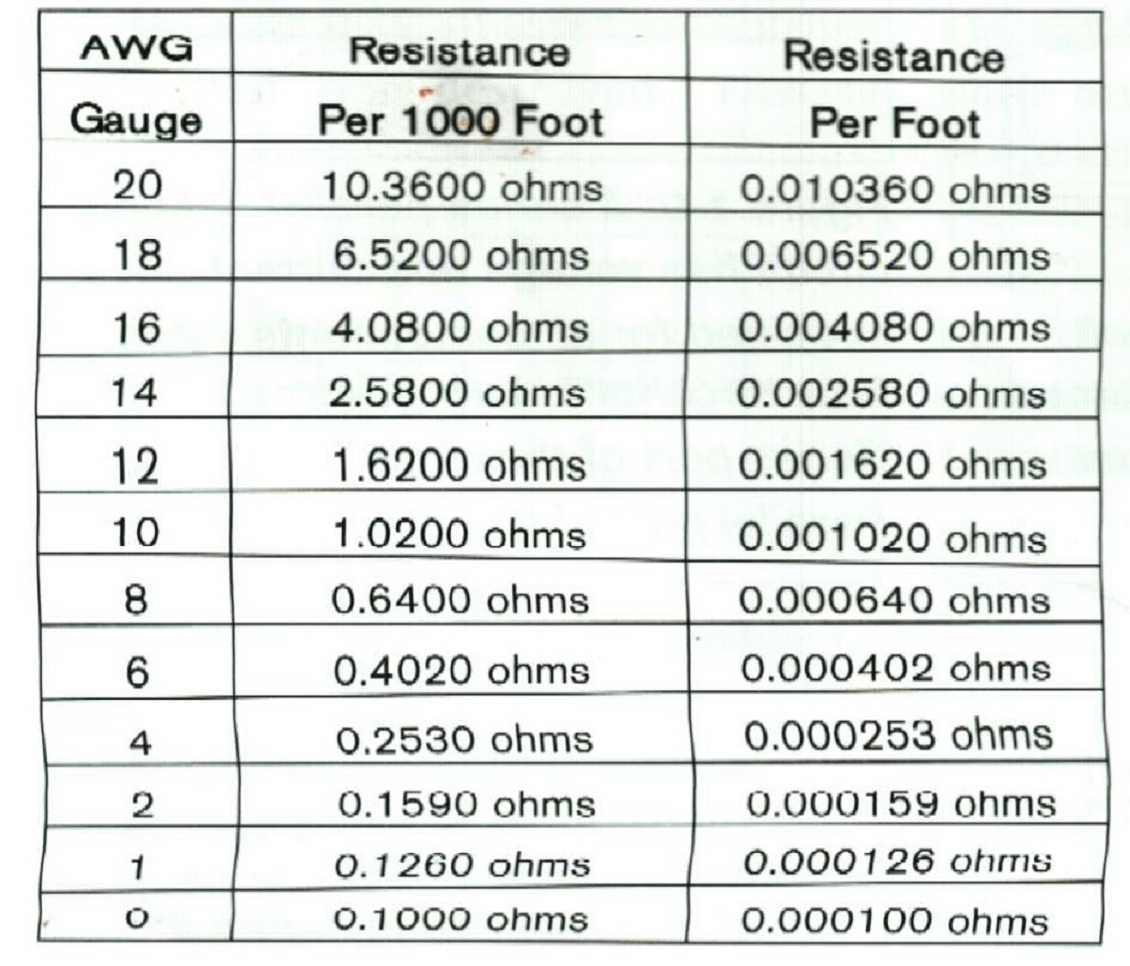Copper Wire Resistance Per Foot: A Comprehensive Guide
Copper wire resistance per foot is a crucial aspect in electrical engineering and various applications where copper wires are used. Understanding this resistance is not only important for engineers but also for DIY enthusiasts and anyone involved in electrical installations. In this article, we will delve into the details of copper wire resistance, exploring its significance, calculations, and practical applications.
This guide will cover various topics, including the properties of copper, the formula for calculating resistance, and the impact of wire gauge on electrical systems. Whether you are an experienced electrician or just starting, this article will equip you with the knowledge you need to understand copper wire resistance and its implications in electrical applications.
Table of Contents
- Properties of Copper
- Understanding Resistance
- Calculating Resistance
- Wire Gauge and Its Impact
- Applications of Copper Wire
- Common Mistakes in Wire Selection
- Best Practices for Wire Use
- Conclusion
Properties of Copper
Copper is one of the most widely used materials in electrical applications due to its excellent conductivity and reliability. Here are some key properties:
- Conductivity: Copper has a high electrical conductivity, making it ideal for wiring.
- Corrosion Resistance: Copper is resistant to corrosion, which enhances its longevity.
- Thermal Conductivity: It also has high thermal conductivity, which helps dissipate heat.
- Malleability and Ductility: Copper can be easily shaped and drawn into wires without breaking.
Understanding Resistance
Resistance in electrical circuits is a measure of how much a material opposes the flow of electric current. The resistance of a wire depends on several factors:
- Material: Different materials have different resistivities; copper has low resistivity.
- Length: Resistance increases with the length of the wire.
- Cross-sectional Area: Thicker wires have lower resistance.
- Temperature: As temperature increases, resistance also typically increases.
Calculating Resistance
The resistance (R) of a copper wire can be calculated using the formula:
R = ρ * (L / A)
Where:
- R: Resistance in ohms (Ω)
- ρ: Resistivity of copper (approximately 1.68 x 10^-8 Ω·m)
- L: Length of the wire in meters
- A: Cross-sectional area in square meters
For practical applications, you can also refer to the standard resistance chart for copper wire, which provides resistance values per foot based on different wire gauges.
Wire Gauge and Its Impact
The American Wire Gauge (AWG) system defines the diameter and resistance of copper wire. The following points outline the relationship between wire gauge and resistance:
- Thicker Wire (Lower AWG): Provides lower resistance and can carry more current.
- Thinner Wire (Higher AWG): Has higher resistance and is suitable for lighter applications.
- Choosing the Right Gauge: It is essential to select a wire gauge that matches the current requirements to prevent overheating.
Applications of Copper Wire
Copper wire is used in various applications, including:
- Electrical Wiring: Residential and commercial electrical systems.
- Telecommunications: Data and signal transmission.
- Automotive: Wiring in vehicles for electrical systems.
- Industrial: In motors, generators, and transformers.
Common Mistakes in Wire Selection
Selecting the wrong wire gauge or material can lead to inefficiencies and hazards. Here are some common mistakes:
- Using a wire gauge that is too small for the current load.
- Ignoring the impact of temperature on resistance.
- Not considering the length of the wire run when calculating resistance.
Best Practices for Wire Use
To ensure safety and efficiency in electrical applications, consider the following best practices:
- Always refer to the wire gauge chart for proper sizing.
- Use adequate insulation to prevent overheating.
- Regularly check connections to ensure they are secure.
Conclusion
Understanding copper wire resistance per foot is essential for anyone working with electrical systems. By grasping the concepts of resistance, wire gauge, and proper application, you can ensure efficient and safe electrical installations. We encourage you to share your thoughts and experiences in the comments below, and don't hesitate to explore more articles on related topics!
Thank you for reading! We hope to see you back on our site for more informative content.
Article Recommendations
- De Donde Es La Mama De Donal Trump
- Robert James Ritchie Jr
- Stevie Nicks Bio
- Glitter And Gold Theme Party
- Great British Bake Off Shop
- Yk Osiris And Diddy
- How Old Is Helena Vestergaard
- Jenna Ushkowitz
- Bob Evans
- What Team Does Anthony Rizzo Play For




